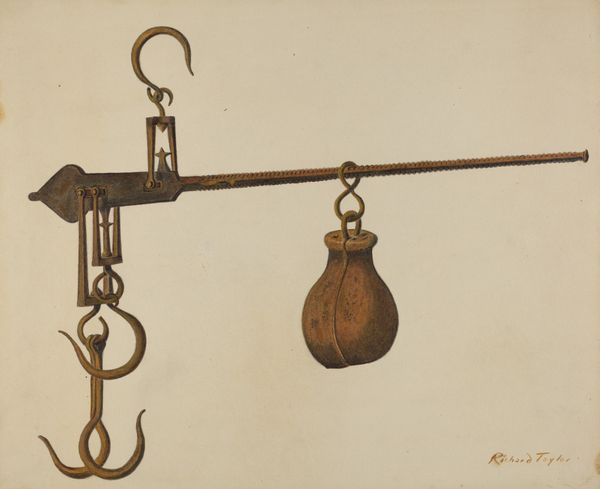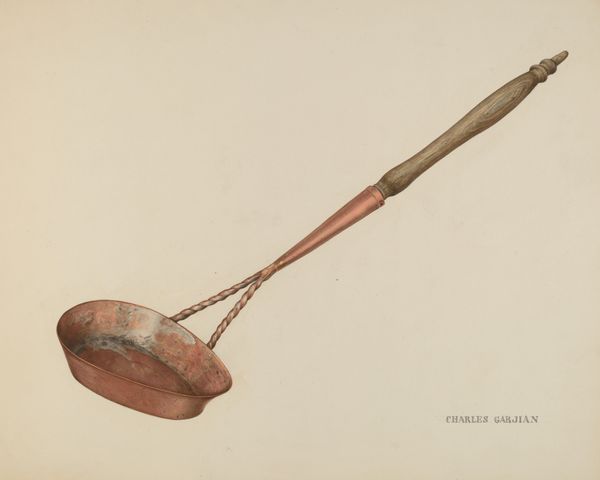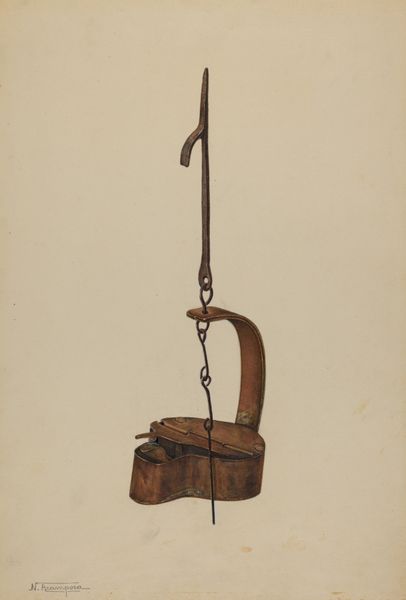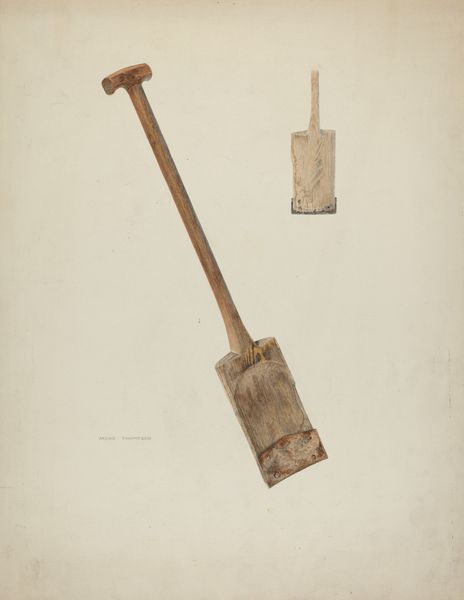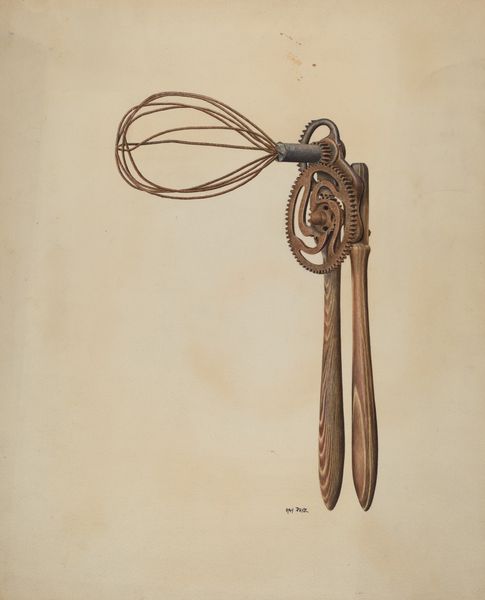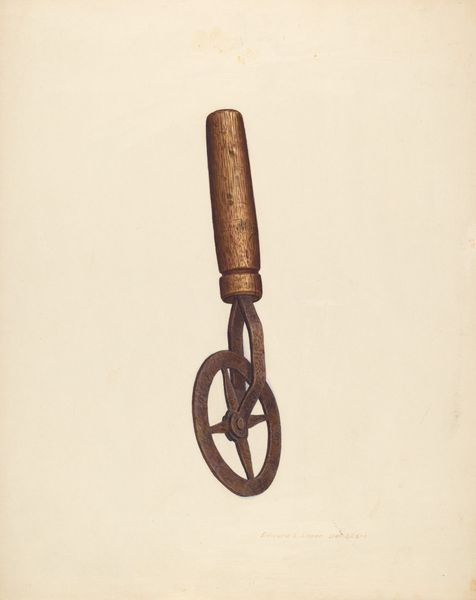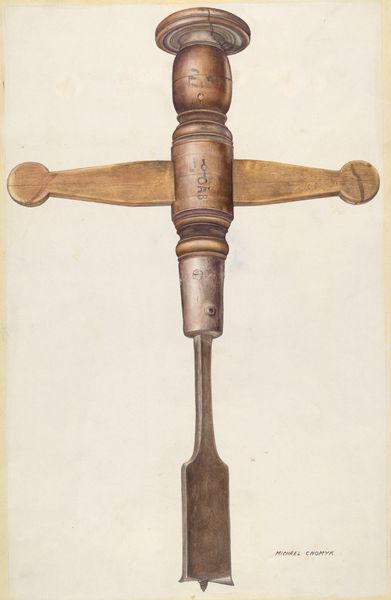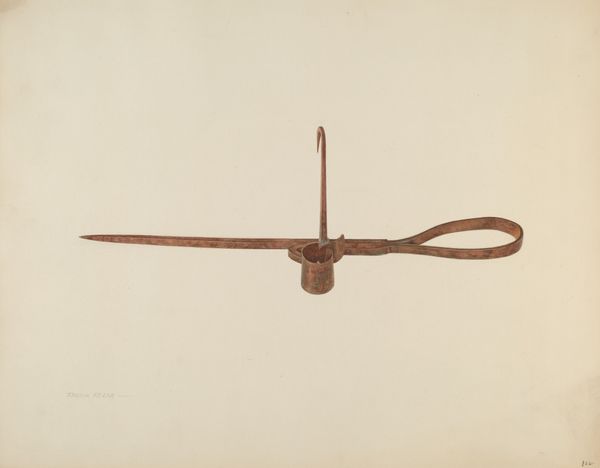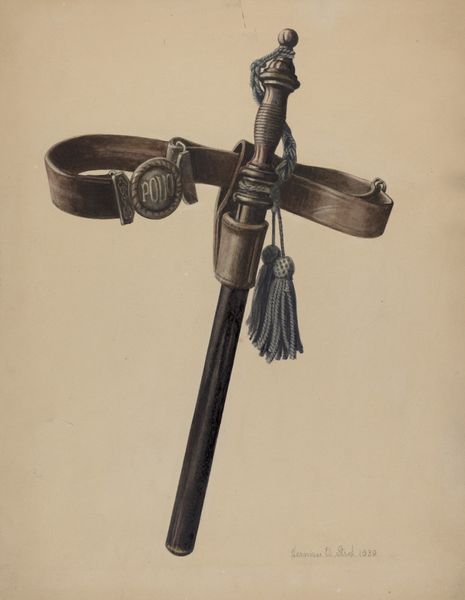
drawing, watercolor
#
drawing
#
water colours
#
form
#
watercolor
#
line
#
watercolor
#
realism
Dimensions: overall: 35.5 x 45.8 cm (14 x 18 1/16 in.) Original IAD Object: 21" long
Copyright: National Gallery of Art: CC0 1.0
Curator: Frank M. Keane created "Steel Yard" around 1939, employing watercolor to render this measuring tool. What's your initial impression? Editor: A stillness. And such aged materiality rendered by the watercolor medium—there is a rustic starkness to this utilitarian object divorced from its labour context. It really brings focus to its physicality. Curator: I agree; the technique allows the grain of the steel yard to truly shine through, doesn't it? The use of watercolor underscores the object’s relationship to processes of measurement and production in a pre-digital age, reflecting on human endeavor within the scale of material labor. Editor: Absolutely. I wonder what statement Keane sought to make regarding the identity of labor in that era. Given the weightiness the object held, this instrument, almost a character study, provides narrative depth and questions what, or more accurately *who* defines economic value and production within industry. Curator: Indeed. Consider also the cultural narrative—such tools embody the hands of artisans and trade laborers, linking human interaction with daily sustenance. Was Keane positioning them with greater socioeconomic considerations and worth? Editor: That's quite compelling, isn’t it? The intersection between industrial function, hand craftsmanship, and ultimately its effects on lived experience... How else might our current perception change by acknowledging it as part of an era heavily affected by race, gender, and socioeconomic barriers? Curator: Interesting point... by isolating an object like the "Steel Yard" and elevating its aesthetic presence with a sensitive medium like watercolor, Keane draws attention to these unsung contributors. Editor: Precisely. Looking at this watercolor, I appreciate even more keenly its symbolic value as an icon of untold industry, of all the hidden social tensions and historical labour relations implicit in simple measurements. Curator: I'll remember those tensions the next time I buy steel or maybe even groceries, considering where goods come from and who weighed and valued them first. Editor: Absolutely. We are left with a unique blend of medium, tool and method that offers compelling visual analysis.
Comments
No comments
Be the first to comment and join the conversation on the ultimate creative platform.

